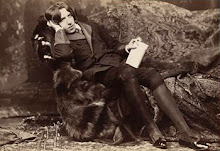
FOLK SONG ABOUT THE UNDEAD BROTHER
Library comment:This is a medieval Greek folksong, about 9th century, showing how old the fables about undead people are in the Balcan area. It is in the school syllabus (A class, 16 year-olds)
It is about a family with ten children. Nine sons and one daughter. It was a very unfortunate family, because a disease happened and all the sons died. Their mother loved her daughter much more than her sons. Someday when the family was still happy, people had came from Babylon in order to take the daughter back to their country as a bride. In the beginning her mother couldn’t give her daughter up to the strangers. One of the sons, Konstandis, promised the mother that whatever happened, he would bring his sister back to her mother. Well, the mother was convinced and then she gave her approval. Then the disease killed the nine sons. Their mother went to the son’s grave, to complain about the promise. Suddenly Konstadis rose from the dead in order to fulfill his promise and he took his sister back to their lonely mother.
Vaggelis Fotiades, C class
Maia Morgenstern, Romania's celebrated actress, is performing along with Greek, Bulgarian, Albanian and Serbian actors the theatrical edition of The Dead Brother's ballad during March and April 2009. "Being Balcan is an intrinsic and important issue" says the actress who participated in Theodor Aggelopoulos's prized Ulysses Gaze and has played Lycistrata for Michalis Kakoyiannis.
The Greek press hailed her as the actress with the international career and the pround Balcan heart.

Το τραγούδι του Νεκρού Αδελφού, η ελληνική εκδοχή του οποίου διδάσκεται στην Α Λυκείου σήμερα, έχει βαλκανικές ρίζες και έχει μελοποιηθεί από τον Θεοδωράκη, ενώ το Μάρτιο και Απρίλιο του 2009 ανεβαίνει στην Αθήνα σε θεατρική διασκευή σε πέντε βαλκανικές γλώσσες. Η σπουδαία Ρουμάνα ηθοποιός Μάγια Μόργκενστερν, "η ηθοποιός με τη διεθνή καριέρα και την περήφανη βαλκανική καρδιά" βεβαιώνει στο περιοδικό Κ της Καθημερινής, 21/3/2009, τεύχος 303, ότι το να είσαι Βαλκάνιος είναι κάτι εξαιρετικά πολύπλοκο και σημαντικό. Η ίδια έχει παίξει τη Λυσιστράτη του Κακογιάννη και έχει συμμετάσχει στο Βλέμμα του Οδυσσέα του Θεόδωρου Αγγελόπουλου.

























2 comments:
This is Nancy from the Greek bookland
I would like to add that.In the and of the song,mother and daouxter deid together inside their house.I believe they deid very happy and Godis taken they because in the really life they can't stay together and the God decided to taken they and they life one new life but in the sky...I beloeve that they found happiness in the sky,since they couldn't be together on this Earth.My grandfather used to receite it ti school and he often tells it to me,so i feel i know it well...!!
On the other hand, there are some Anthropological studies which show that leaving in Death is a original concept of the ancient people.The thesis provides an explanation of why a culture that views life and death as a binary opposition would create a being that exists between these two finite realms of consciousness ultimately on the assumption that the body continues to function after death. This "third" state of consciousness places the vampire in a subliminal state of being; neither alive nor dead, but living in death.
Pe de altă parte, există unele studii antropologice, care arată că, oamenii din vechime aveau o conceptie originala despre Moarte.Teza incearca sa ofere o explicaţie de ce o cultură care pare constituita pe binomul viaţă şi moarte ca o opoziţie între aceste două domenii finite de conştienţă a imaginat acest personaj, mergand mai mult pe presupunerea că organismul continuă să funcţioneze după moarte. Aceasta a "treia" stare de conştienţă este ocupata de vampir într-un stadiu paradoxal - nici viu, nici mort, dar...de viaţă în moarte.
Post a Comment